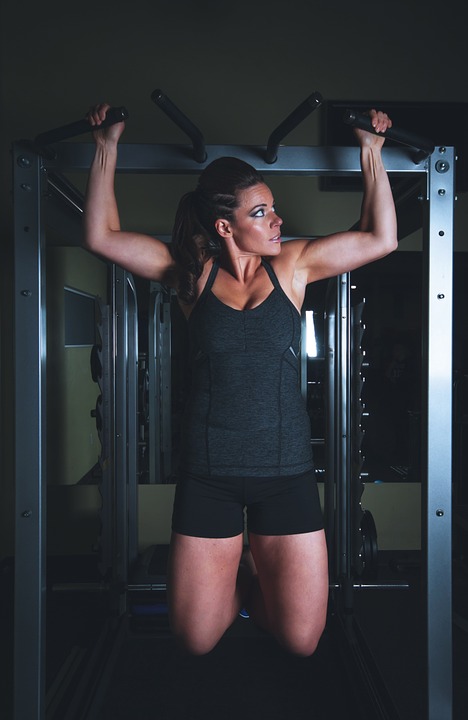Exercises such as squats, lunges, push ups and sit ups are fairly easy to “practice” anywhere, anytime. A pull up requires you to have something to “hang” from. Simply put, if you don’t have a bar at home strong enough to hold your body weight; then how do you get the practice in to enable you to do that ever elusive pull up?
Doing 10 or more does sound daunting, maybe your goal, like mine, is to do just one.
One pull up
Is it too much to ask for? Probably not! If you follow my tip 5 tips below you will at least be on your journey to your goal.
Tip 1: Decrease your body mass
If you weigh less, you’ll definitely have less to lift! Sound obvious right? Just be careful that you’re not losing muscle mass, especially in your arms and back, as you’ll need all the muscle you need to lift the rest of your body, no matter what your weight. Check out your scores in house on our Tanita body analysis machines to make sure you’re losing fat and not muscle.
Tip 2: Make back exercises a priority
Your back contains a lot of big muscles, most of which are mainly used in pulling motion type exercises. If you throw in dumbbell flies, rows and extensions into your workouts as a priority over the next few months; then you’re more than likely going to see an improvement in strength in this area. Ask one of the fitness team to give you a plan which focuses on this area of the body to give you the most gains.
Tip 3: Body weight rows
Adding body weight or assisted pull ups into your routine will slowly move you in the right direction. Finding a low parallel bar (fixed position) either by moving the smith machine down a few notches or the Omnia also has this function. Place your hands on the bar and lie underneath on your back, pull your upper body/chest up to the bar; keeping your heels on the floor out in front of you.
The pull up machines in the gym also have an assist option to allow you to decrease the assisted weight gradually.
Tip 4: Negatives
Every “lift” you execute has two phases. A positive and a negative (or concentric and eccentric). A bicep curl is the simplest way to explain. As you lift the dumbbell up and contract (concentric/positive) the muscle shortens and becomes more compact, as you lower the weight back down (eccentric/negative) under control, even though it feels easier, the muscle is still working as hard during this phase of the lift as it was during the “difficult” contacting phase at the beginning.
Start with your pull up at the top and without assistance, lower your body down slowly back to the “Start” of the pull up. This will work all the right muscles, and feel easier than if you were to work on both positive and negative parts of the movement.
Tip 5: Chin ups
If you can master a chin up, an exercise which uses the biceps more than the back, you’re halfway there! A chin up uses similar muscles to a pull up which makes it a great addition to your workout. The grip change engages the lats and puts less pressure on the biceps, so practicing chin ups; or indeed mixing this with lat pull downs, will eventually fire all the right muscle groups to get you to your goal.
Either way, the best way to learn is to speak to someone in the know! Book your personalised programme with a member of the gym team today. Regular programmes and Tanita body analysis are all included in our gym memberships.
Heather, Kimberley Leisure Centre
Book at reception or call us on
Kimberley: 0115 917 3366
Bramcote: 0115 917 3000
Chilwell Olympia: 0115 917 3333




